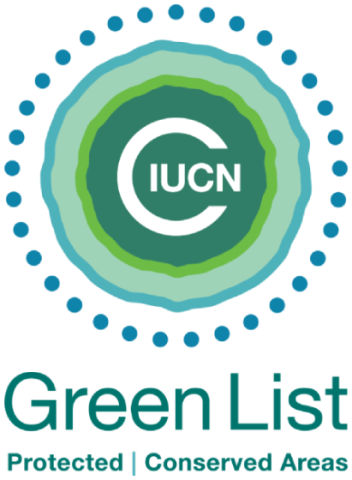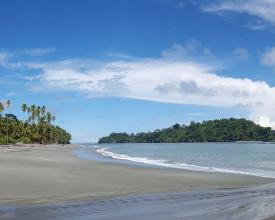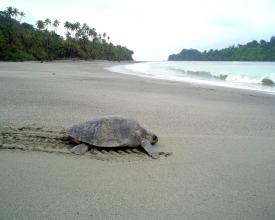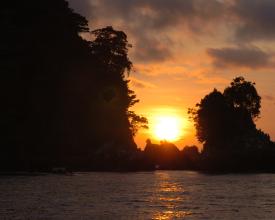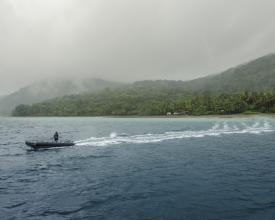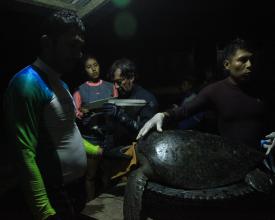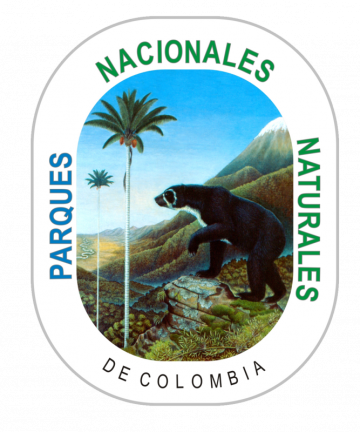
Ecotourism in the Gorgona National Natural Park (PNNG), a strategy aimed at the conservation of the protected area and the economy of its people in the Colombian Pacific.
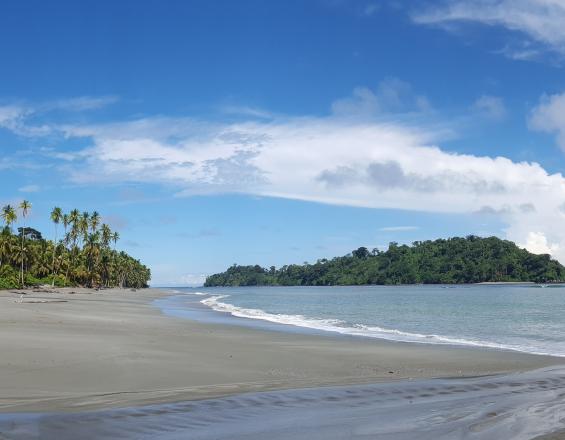
Since 2017, Gorgona National Park has had its ecotourism plan approved, which provides guidelines in the development of this activity. Ecotourism is conceived as a conservation strategy for the protected area, whose objective is to raise awareness among visitors who sustainably take advantage of nature while maintaining ecological processes, protecting biodiversity, and protecting the cultural integrity of the Park. In addition, ecotourism contributes to the generation of economic opportunities for the local populations of Guapi, Timbiquí, and Bazán in the Cauca and Nariño regions. In this way, actions have been consolidated to strengthen the scientific and traditional knowledge of the Colombian Pacific, with the objective of turning the area into an ecotourism, educational and competitive destination at the national and international level.
Context
Challenges addressed
- The ecotourism planning exercise in Gorgona NP was adapted to the information needs (carrying capacity and impacts), to advance decision-making in the context of climate change, the Covid-19 pandemic and anthropogenic activities that can generate pressures and threats to the values under conservation. This information requires a comprehensive analysis in light of the SDGs in order to update the Park's ecotourism planning within the framework of the 2030 global agenda. Given this scenario, it is important to highlight that greater management of economic resources is needed.
- Progress must be made in training processes for the tourism sector, highlighting the importance of having trained local guides and spaces for environmental-cultural interpretation with virtual and physical signage to raise awareness of the visitor experience.
Location
Process
Summary of the process
The interaction between the development of criteria and indicators to determine the planning and management of ecotourism (ecotourism vocation), the design of visitor experiences and the operation of an exclusively ecotourism concessionaire in Gorgona NP, is a learning process for the National Natural Parks of Colombia in its mission to manage and exercise environmental authority. Finding a balance in the face of problems arising from climate change and the anthropic footprint vs. the conservation of natural spaces is an opportunity to generate best practices and models of financial and social sustainability, which point to the path of recognizing the dynamics of the territory, logistical and operational facilities without exceeding the installed capacity, serving viable volumes of visitors to provide deep ecotourism experiences that leave people with the environmental and cultural richness of the Colombian Pacific.
Building Blocks
Determination of ecotourism in Gorgona NP based on the application of criteria and indicators.
Resolution 531 of 2013 establishes guidelines for the planning and management of ecotourism in the areas administered by the Colombian National Natural Parks System, based on 8 criteria, 2 biophysical and 6 social. The criteria are as follows:(i) areas with over-represented ecosystems in the SPNNC; (ii) PAs with greater anthropic pressures; (iii) PAs with a tendency to increase visitor income; (iv) PAs with work plans involving stakeholders for ecotourism; v) Existence of political and planning conditions for ecotourism development; vi) PAs with greater accessibility; vii) PAs with infrastructure facilities for ecotourism development; and viii) PAs that work together with local communities in productive processes. As a result of the evaluation of the criteria, the PNNG obtained a score that allowed it to identify such management, promoting processes that contribute to the generation of development opportunities for local and regional populations, based on the sustainable use of nature.
Enabling factors
- Criteria tested in the areas administered by National Parks of Colombia recognizing the main ecological structure that supports ecotourism activities, from values under conservation as the tropical rainforest, marine ecosystems and the richness of fauna and flora that contain the marine protected area.
- Geological, fossiliferous and archaeological heritage that keeps the Gorgona Island, along with the cultural connotation that has the operation of a prison on the island until 1984.
Lesson learned
- Ecotourism vocation (EV) is the set of conditions and characteristics that determine the aptitude of a PA to establish ecotourism as a conservation strategy, contributing to fulfill the environmental and social function of the NNP, promoting the social valuation of nature and the recognition of ecotourism among local, regional and national stakeholders as an alternative that contributes to the conservation of natural and cultural heritage.
- The evaluation is carried out not only at the PA level, but also on the basis of a system analysis, in which criteria are evaluated equally for all areas, identifying opportunities and threats to them; in this way, the viability of implementing ecotourism as a conservation strategy is defined. To achieve this vocation, it is necessary to include social participation in the PA; therefore, the park team, together with different community and institutional actors, have worked on the implementation of good ecotourism practices to achieve the 2030 global agenda.
Design of experiences based on natural, historical and cultural attractions.
The design of experiences based on natural, historical, and cultural attractions is intended to promote environmental awareness and convey the importance of conservation of the marine protected area. The process for designing these experiences is based on national guidelines and advances in the knowledge of Gorgona NP, including continuous dialogue with visitors and stakeholders in the territory. Subsequently, the information is analyzed in an integrated manner, and interpretation scripts are developed for terrestrial and marine environments that are made viable through operational and logistical support according to the capacities of Gorgona NP. Some experiences that have been identified are: Enchantments of the Deep and Cultural Heritages and the Enchanting Island. Finally, the positive and negative impacts of ecotourism activities are monitored and satisfaction surveys are conducted.
Enabling factors
- Resolution 1531-1995 regulates activities in the PNNG, for the entry, stay, and permitted and disallowed activities of visitors.
- Definition of tourist carrying capacity for the three main beaches of the PNNG, with total average estimates between 80 and 120 people, and restrictions for specific trails. For the 9 main dive sites, total averages are between 27 and 60 divers per day, depending on weather conditions and operational capacity.
Lesson learned
- Need for updated information on natural attractions based on traditional knowledge, monitoring and research.
- Implementation of global, national, regional and local ecotourism priorities, according to the dynamics of the territory.
- PNN officials' knowledge of the territory for the educational processes of trail interpretation.
- Among the aspects to improve, it is important to provide continuity to the administrative, technical, and operational processes, which should be balanced between the needs and expectations of the communities and the development of the nature tourism sector.
Operating scheme for ecotourism services
The ecotourism services concession program in Colombia's National Natural Parks (PNNC) began to be implemented in 2005, with the objective of providing better attention to visitors and allowing the park to focus its efforts on conservation activities. The concessionaire's operations are based solely on the provision of ecotourism services, maintenance and improvement of infrastructure, provision of assets, and environmental sanitation, all under legal regulations and with monitoring by PNNC. In addition, the ecotourism offer is based on the natural, historical, and cultural attractions that make Gorgona NP an interesting destination.
Enabling factors
- Creation of a regulatory framework for private participation in ecotourism services in Colombia's National Natural Parks" in 2005.
- Existence of a general infrastructure for lodging, cleaning, waste management, food services, and nature tourism.
- A business model that recognizes the volume of visitors as an element that can favor conservation.
- Need to generate connectivity in the region and reasonable access to the Sanguianga-Gorgona region.
Lesson learned
- It is important to advance in the more effective incorporation of the community, which can produce more benefits to the parties, with a less hotel-like vision, establishing a well differentiated management for operators and seasons, with the purpose of balancing costs for all parties.
Impacts
- Conservation of more than 61,000 hectares that make up the PA.
- Awareness and environmental education of approximately 35,000 people, national and foreign, who have visited the park in the last 9 years (annual average: 4,500).
- 25 jobs generated annually in the municipalities of Guapi, Timbiqui, El Charco, La Tola, Mosquera and Olaya Herrera as a result of visits to the PA.
- Thanks to the ecotourism planning exercise and its subsequent implementation, Gorgona NP has allowed for the continuous design and improvement of visitor experiences, which also includes economic benefits for local operators.
- Based on Resolutions 1531 of 1995 of PNN Gorgona and 0531 of 2013 of Parques Nacionales Naturales de Colombia, through which the conditions for the ecotourism vocation of PNN Gorgona are established, a positive effect on the conservation of the protected area has been generated.
- A methodology was established to monitor the impacts generated by tourism activities.
Beneficiaries
National and local tour operators, tourists and local population.
Story
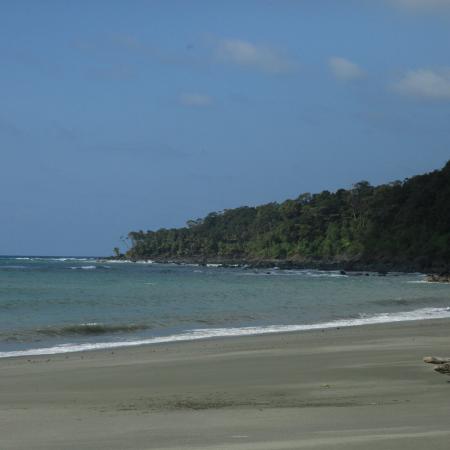
The Gorgona National Park was declared 37 years ago, with a coastal marine territory that, despite not having communities settled in its jurisdiction, is a great cultural and economic reference for the region in the Colombian Pacific. It is recognized for its important role in protecting the life cycle of fauna and flora species, highlighting the richness of marine fish that in their adult stage sustain much of the food security of the coastal communities of Cauca and northern Nariño. This territorial dynamic that transcends the local sphere or the immediate space of the protected area's jurisdiction requires special management with a holistic vision of the territory, because the success of the environmental, economic, social and cultural development of the region depends on it.
The Sanquianga-Gorgona subregion is home to the charms of Colombia's southern Pacific coastal zone, where the 61,687.5-hectare Gorgona National Park is a world reference. The ecotourism vocation of the PA was the result of the application of the guidelines outlined in Resolution 0531 of 2013 of the National Natural Parks of Colombia, recognizing the charm of natural landscapes and social historical content as elements of biological and cultural diversity that can be communicated following good practices in ecotourism. These achievements have contributed to the development of the Eastern Tropical Marine Corridor CMAR, being Gorgona a member of the working table for international nature tourism.

